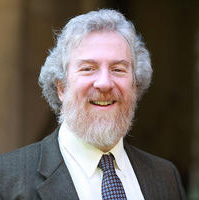Shomer Yisra’el—The One Who Guards Israel

In the weekday liturgy, after the ‘Amidah, we find in the siddur a little-known sequence of prayer texts known as tachanun (supplications); it can be found in Siddur Sim Shalom of the Conservative Movement, pages 59 through 63. It is not difficult to detect some ambivalence about tachanun, for there is a long list of days on which it is to be omitted, including Shabbat and all Holy Days, and all days of celebration—even the birthdays of famous rabbis.
Many who attend Jewish services comment upon the lengthy array of fixed texts that are to be recited. We look to find depth and inspiration through understanding and the interpretation of meaning, and through the melodies that might be introduced by the hazzan or anyone else leading the prayers. But it is certainly true that the fixed prayers are long and can challenge the soul of even the most devoted among us.
So it is interesting to look at the guidance of Maimonides concerning tachanun:
“Afterwards . . . one should be seated upon the ground and prostrate oneself, and offer whatever supplications one wishes” (Laws of Prayer 5:13)
No fixed text is prescribed by Maimonides for tachanun. He is addressing the challenge of finding space for private and spontaneous prayer in an increasingly fixed liturgical system. While there are traditional sources claiming that the text of the ‘Amidah was fixed by the (mythical) Men of the Great Assembly, it is agreed by historians that the text (but not the themes) of the blessings of the ‘Amidah was fluid through the 4th century and perhaps much later. Each person was free to improvise their own prayer, based upon predetermined themes; and, after the ‘Amidah, each person offered whatever personal supplications they wished. As early as the Mishnah we find
Rabbi Eliezer teaches: “If you make your prayer a fixed unchanging task, it is not Tachanunim” (Mishnah Berakhot 4:4), [and is thereby significantly deficient.]
As the text of the ‘Amidah became fixed, the place of spontaneous prayer or supplication came to be immediately afterward, identified as tachanun. There is a not-so-subtle irony that, in the course of time, fixed texts have emerged even for tachanun, guiding us through psalms and reflections on the themes of sin and forgiveness. The instructions in various versions of the siddur certainly encourage private prayer, but the length of the now-fixed text is considerable.
Toward the end is a beautiful poem, Shomer Yisra’el, of unknown authorship (Siddur Sim Shalom 63), which turns to God as the Protector of Israel—the People who recite Shema’ Yisra’el—and Protector of the Holy Nation who affirm (God’s) sanctity three times each day. Poetry is rare in the (daily) siddur, and perhaps this short text is intended to inspire each person to add personal prayers, reflecting their own life, their own needs. Tachanun calls us to let our head fall into our arms, and to address ourselves, in all humility, to the divine.



